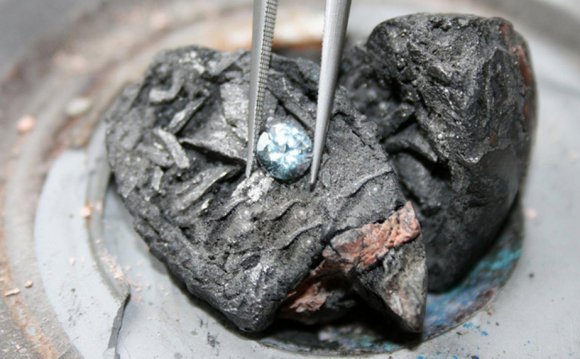
Most of the diamonds synthesized from cremated remains come out blue, due to trace amounts of boron in the body. These diamonds, made from the ashes of animals, were created through the same process used to make diamonds from human remains. Courtesy Rinaldo Willy/Algordanza hide caption
toggle caption Courtesy Rinaldo Willy/AlgordanzaMost of the diamonds synthesized from cremated remains come out blue, due to trace amounts of boron in the body. These diamonds, made from the ashes of animals, were created through the same process used to make diamonds from human remains.
Courtesy Rinaldo Willy/AlgordanzaDiamonds are supposed to be a girl's best friend. Now, they might also be her mother, father or grandmother.
Rinaldo Willy, the company's founder and CEO, says he came up with the idea a decade ago. Since then, his customer base has expanded to 24 countries.
Each year, the remains of between 800 and 900 people enter the facility. About three months later, they exit as diamonds, to be kept in a box or turned into jewelry.
Most of the stones come out blue, Willy says, because the human body contains trace amounts of boron, an element that may be involved in bone formation. Occasionally, though, a diamond pops out white, yellow or close to black – Willy's not sure why. Regardless, he says, "every diamond from each person is slightly different. It's always a unique diamond."
Most of the orders Algordanza receives come from relatives of the recently deceased, though some people make arrangements for themselves to become diamonds once they've died. Willy says about 25 percent of his customers are from Japan.
The basic process reduces the ash to carbon, then slides it into a machine that applies intense heat and pressure — for weeks. That's at least several hundred million years faster than diamonds are made in nature.
"The more time you give this process, the bigger the rough diamond starts to grow, " Willy says. After the new diamond cools off, the crystal is ground and cut to shape, and sometimes engraved with a laser.
YOU MIGHT ALSO LIKE







